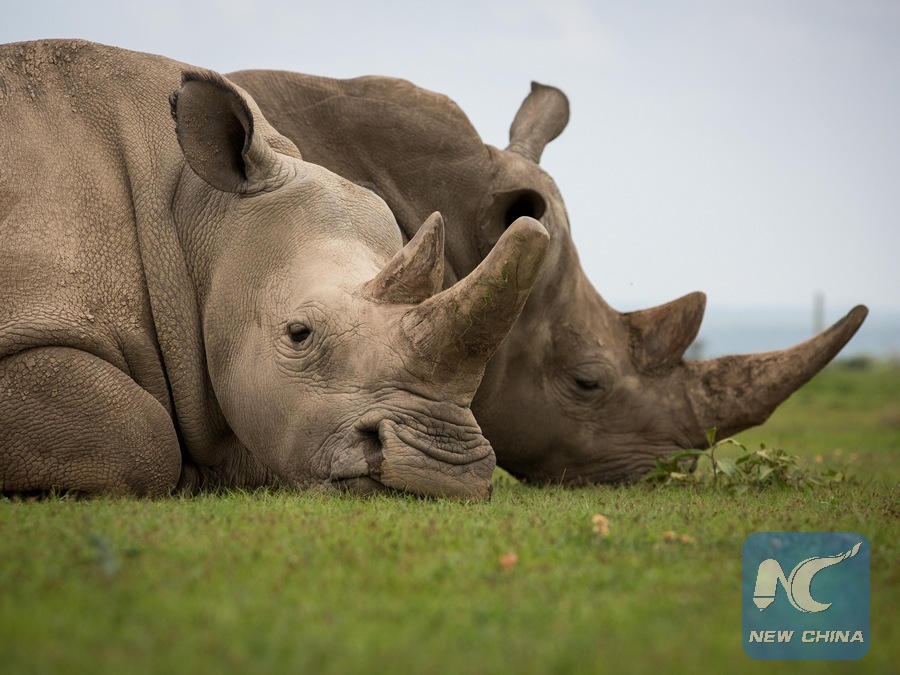
Photo taken on March 30, 2018 shows Fatu (L), one of the world's last two remaining female northern white rhinos, in Ol Pejeta Conservancy in Laikipia county, northern Kenya. (Xinhua/Lyu Shuai)
NAIROBI, July 13 (Xinhua) -- The Kenyan government on Friday confirmed the death of eight black rhinos at the country's Tsavo East National Park, saying it has launched investigations into the deaths.
Najib Balala, Cabinet Secretary for Tourism and Wildlife, said the latest mortality rate is unprecedented in the Kenya Wildlife Service (KWS) operations, prompting him to order for the invitation of external and independent investigations.
"Preliminary investigations by KWS veterinary teams attribute the deaths to salt poisoning as a result of taking water of high salinity on arrival in the new environment," Balala said in a statement issued in Nairobi.
He said these findings are consistent with cases of salt poisoning in other animal species, indicating a challenge in the translocated rhinos' adaptation to the change from fresh water to saline water in the sanctuary.
"The high salt levels lead to dehydration that triggers thirst mechanism, resulting in excess water intake of the saline water that further exacerbates the problem," he said.
The CS said the eight were part of a crash of 11 rhinos that had been moved to the sanctuary in an initiative to start a new population in an exercise carried out by KWS and the World Wide Fund for Nature (WWF).
"Disciplinary action will definitely be taken, if the findings point towards negligence or unprofessional misconduct on the part of any KWS officers," Balala warned.
Rhinos are among the most endangered species in the world.
Balala has also directed the KWS to immediately suspend the ongoing translocation of black rhinos following the deaths. A total of 14 rhinos had been planned to be translocated.
He said rhino translocation and immobilization for various management purposes in Kenya has been a success story with very low mortality rates over the years.
"Between 2005 and 2017, 149 rhinos have been translocated with eight mortalities, excluding the current deaths in Tsavo East National Park where 11 were translocated with eight fatalities. "
Meanwhile, wildlife conservationists have called for speedy investigations into the death of the black rhinos.
Paula Kahumbu, CEO of Kenyan conservation NGO WildlifeDirect, said the latest incident is the worst disaster ever recorded in the East African nation.
"It's surprising because KWS has conducted many successful large scale translocations of rhinos before. Losing one in 15 is an acceptable loss - but never have we seen such huge losses," Kahumbu said.
She called for the translocation exercise to be put on hold until the matter is fully addressed.
"Moving rhinos is complicated and risky, akin to moving gold bullion. It requires extremely careful planning. But unlike gold, rhino translocation also have major welfare considerations," she said.
According to KWS, Kenya had at the end of 2017 a rhino population of 1,258 (745 black rhinos, 510 southern white rhinos and three northern white rhinos, which was reduced to two after the death of the only male northern white rhino in March), having grown from fewer than 400 rhinos in the 1980s.
Unrestrained poaching in the 1970s and 1980s resulted in a substantial deterioration in the rhino population, from over 20,000 to approximately 300 individuals in 1989.
The surviving rhinos are being corralled into fortified sanctuaries with the aim of enhancing breeding.

